|
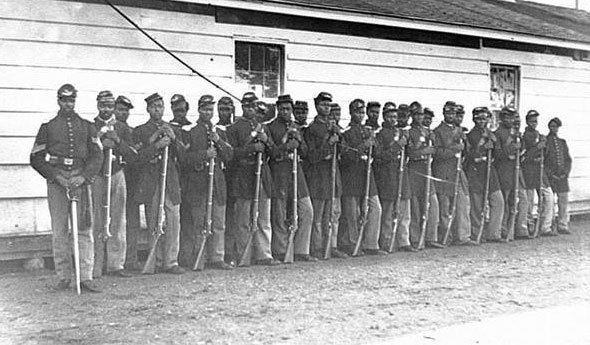
District of Columbia. Company E, 4th US Colored Infantry at Fort Lincoln
INDEPENDENCE DAY (CELEBRATING THOSE WHO HELPED GAIN OUR INDEPENDENCE)
Sunday, July 3, 2011
Guest Writer for This Unit: Tyrone Emmanuel McGowan Jr. An associate minister of the Providence Missionary Baptist Church (Chicago, Illinois), Tyrone is a first-year Master of Divinity candidate at Yale Divinity School in New Haven, Connecticut.
The unit you are viewing, Independence Day (Celebrating Those Who Helped Gain Our Independence), is a compact unit. This means that it does not have a supporting cultural resource unit and worship unit. Instead, to enliven the imagination of preachers and teachers, we have provided scriptural text(s) that we suggest for this moment on the calendar along with a sermonic outline, suggested links, books, articles, songs, and videos. For additional information, see Independence Day in the archives of the Lectionary for 2008–2010. 2011 is the first year that the African American Lectionary has posted compact units for moments on its liturgical calendar.
I. Description of the Liturgical Moment
Independence Sunday represents a unique moment in the religious and historical reality of blacks in America. As African American faith communities join with the rest of our fellow citizens to celebrate the birth of this nation, we can never forget the tragic reality that since this nation’s founding, America has, in the words of former Secretary of State Condoleezza Rice, suffered from a congenital birth defect. This birth defect of slavery and institutionalized racism serves as the primary reason African Americans stand in a creative tension regarding Independence Day. On one hand we join with Frederick Douglass when he prophetically challenged America on the blatant inequalities toward blacks in Antebellum America in his 1852 speech “What to the Slave is the 4th of July?” Douglass said:
I say it with a sad sense of the disparity between us. I am not included within the pale of this glorious anniversary! Your high independence only reveals the immeasurable distance between us. The blessings in which you, this day, rejoice are not enjoyed in common. The rich inheritance of justice, liberty, prosperity, and independence bequeathed by your fathers is shared by you, not by me. The sunlight that brought light and healing to you has brought stripes and death to me. This Fourth of July is yours, not mine. You may rejoice, I must mourn.
On the other hand, Langston Hughes captures the hope and determination that African Americans also possess when he writes “I, Too, Sing America.” There is no doubt that African Americans have had to maintain a sense of hope for the future despite our existential condition. As we continue to sing the Lord’s songs, it is this hope that has sustained our community along our journey through this strange land. On this Sunday, not only do we celebrate the birth of our nation, but many congregations may also commemorate the sharing of Holy Communion. We celebrate both national independence and our spiritual independence from sin by the death and resurrection of our Lord and Savior Jesus Christ.
II. Independence Day (Celebrating Those Who Helped Gain Our Independence): Sermonic Outline
A. Sermonic Focus Text(s): Proverbs 11:14 (New Revised Standard Version)
Where there is no guidance, a nation falls, but in an abundance of counselors there is safety.
B. Possible Titles
i. A Tale of Two Nations
ii. One Nation Under God
iii. A More Perfect Union
C. Point of Exegetical Inquiry
After the extended invitation to the pursuit of wisdom in Proverbs chapters 1–9, the reader becomes fixed on the variety of compositional strategies revealed in Proverbs chapters 10–29. Situated in the center of chapter 11, verse 14 emphasizes the factors that contribute to the success of a great nation. While the name of the Lord (YHWH) is invoked in Proverbs much less frequently than in the Torah or the Prophets, and there is not a reference at all to the history of Israel or to a revealed Torah, this group of proverb collections in verses 1-21 are held together by references to the Lord.
Another exegetical inquiry could center around the theme of deliverance that is present in this text. Although it may seem that the Lord is absent and is not mentioned explicitly in the text, there is an implied sense of the power and presence of the Lord working to ensure the deliverance of the Lord’s people. The term “safety” in this text highlights deliverance or salvation by the Lord.
III. Introduction
On this Sunday, as we celebrate those who helped gain our independence, we remember the words of W.E. B. Du Bois in his 1897 Atlantic Monthly article, “Strivings of the Negro People.” It is here where the intellectual giant first coined the term “double consciousness.” During the turn of the century, Du Bois observed the growing racial tension in America and saw double consciousness as a useful theoretical model for understanding the psychological and social divisions in American society. The essential component of this theory of cultural conflict rests in the idea of possessing an awareness of one’s self as well as an awareness of how other perceive that person. Because double consciousness allows individuals to see themselves through the revelation of the world, there is a danger of one being forced to change one’s identity to fit the perception of the dominant culture. In his first book Black Theology and Black Power, James Cone, the progenitor of black liberation theology, picks up on this theme of blacks living in a dualistic reality. Cone argues that when white Americans sing “My Country, ‘Tis of Thee” and hold up other patriotic sayings, they do not intend to include blacks. He writes, “This is the black man’s paradox, the absurdity of living in a world with no rights which the white man [is] bound to respect.”
We have obviously made significant strides as a people in this nation from the time of Du Bois and even since Cone published Black Theology and Black Power. However, there is still something relevant and distinctive about the continued struggle for black independence in this country. While some in the dominant culture in America have continued to promote an agenda that is antithetical to the notions of love, truth, justice, and transformation, the African American community has been able to identify with the powerful proverb in our text. While this text may connote a militaristic motif, this interpreter situates this text in the context of a specific people within a dominant, hegemonic society.
Another translation of this text says, “Without strategy a people will fall, while there is victory in a multitude of counselors.” The victory or safety that the author of this proverb alludes to does not come without a struggle and a price. Our community has realized that it really does take a village to produce positive transformation within a society. As we have battled against the mass of dualistic references in this nation, “double consciousness,” “twoness,” and the like, we have come together as a diverse community of citizens, kissed by nature’s sun, committed to anchoring God’s kingdom on earth for all of God’s children.
IV. Moves/Points
Move/Point One – Nations Must Possess a Progressive Vision
a. Regardless of who maintains political power;
b. Remembering the shortcomings and limitations of past generations;
c. Realizing the possibility of producing a better nation for all.
Move/Point Two – Even Powerful Nations Can Fall
a. As a result of militaristic aggression;
b. As a result of economic inequality;
c. As a result of educational disparities.
Move/Point Three – Nations Must Struggle to Secure Victory
a. Against the forces of the status quo;
b. For the hope of future generations;
c. With the help of the Lord.
V. Celebration
In the words of Frederick Douglass, “Without struggle there is no progress.” The victory or safety that is secured for a righteous nation does not come without struggle. But I’m so glad that we don’t have to fight for victory on our own. We have somebody who promised never to leave us or forsake us. We have the Lord on our side. I can hear our ancestors singing, “He walks with me and he talks with me. He tells me I’m his own. And the joy we share as we tarry there none other has ever known.”
VI. Illustration
One More Move
I tried to get one of my students to research this to see whether it was true and I couldn’t find out. But I’ve heard the story that when the great movie “The Seventh Seal” by Ingmar Bergman was shown in 1958 in New York, Bobby Fischer, who had just won the world championship in chess, was there in the audience. The movie is built around the story of a medieval knight who’s playing a game of chess with the prince of darkness. All the way through the film, the prince of darkness is making moves on the knight, trying to trap him. And in the last scene, the prince of darkness makes a move on the chessboard, looks at the knight, and says, “Checkmate.” The game is over. And the curtain comes down. Bobby Fischer is reported to have turned to his friend and said, “Why is that knight giving up? Doesn’t he see it? Doesn’t he see the pieces on the board? The king has one more move. He can win. The king has one more move!”
Now if you can’t preach that, you can’t preach. Because I don’t know what the excuse is. You say, “I’m too old.” The King has one more move. You say, “I have shortcomings and inadequacies,” and the good news is the King has one more move.
— Tony Campolo, Committed to Hope
VII. Sounds, Sights, and Colors in This Passage
The sounds, sights, and colors in this passage include:
| Sounds: | The voices of a group of advisors offering guidance;
|
| Sights: |
The term “guidance” making reference to a sailor navigating, steering a boat; and
|
| Colors: | A Red, Black, and Green Afro-American flag, and a Red, White, and Blue U.S.A. flag.
|
VIII. Songs to Accompany This Sermon
A. Hymn(s)
- We’ve Come This Far by Faith. By Albert Goodson

- Lift Every Voice and Sing. By James W. Johnson. Tune by J. Rosamond Johnson
B. Well-Known Song(s)
- I’m Free. By Milton Brunson
- We Made It. By Hezekiah Walker
- Woke Up This Mornin’ (with My Mind Stayed on Freedom). Traditional

The following version was adapted by Odetta Holmes
(Well, I) woke up this mornin’ with my mind
stayed on freedom.
Woke up this mornin’ with my mind
stayed on freedom.
Woke up this mornin’ with my mind
stayed on freedom.
Hallelu, hallelu, hallelujah.
Oh well, I’m walkin’ and talkin’
walkin’ and talkin’
with my mind
stayed on freedom.
Walkin’ and talkin’
talkin’ and walkin’
with my mind
stayed on freedom.
I’m walkin and talkin’
talkin’ and walkin’
with my mind
stayed on freedom.
Hallelu, hallelu, hallelujah.
C. Spiritual(s)
- Oh, Freedom.
- Walk Together Children.
- Glory, Glory, Hallelujah.
- We’ve Come a Long Way, Lord.
D. Modern Song(s) (Written between 2000–2010)
- For Every Mountain. By Curt Karr
- We Have Overcome. By Israel Houghton
- Can’t Give up Now. By Mary Mary

You can review past Lectionary worship units for Independence Sunday to find additional songs and suggestions for planning a worship service for this liturgical moment.
IX. Videos, Audio, and/or Interactive Media
A. A big part of gaining freedom for African Americans has been through the theological teaching and preaching of the African American Church. Black Liberation Theology is a product of the black power movement of the 1960s. It provides the moral, ethical, and social foundations of black churches that share a social justice mission and traces its roots back to the original theology of Jesus Christ. A forum held in 2008 presents a comprehensive survey of the origins, nature, character, and practice of Black Liberation Theology. This conversation is moderated by Rev. Dr. M. William Howard, Jr., Pastor of Bethany Baptist Church, and features guest speakers Dr. James H. Cone, the Charles A. Briggs Distinguished Professor, Union Theological Seminary; Dr. Dwight N. Hopkins, Professor of Theology, The University of Chicago Divinity School; Dr. Obery Hendricks, Professor of Biblical Interpretation, New York Theological Seminary; Rev. Dr. Calvin O. Butts, III, Pastor, Abyssinian Baptist Church; Rev. Dr. James A. Forbes, Jr., Senior Minister Emeritus of The Riverside Church; and other guests. “Understanding Black Theology: A 40-Year Retrospective.” Online location: http://www.nypl.org/audiovideo/understanding-black-theology-40-year-retrospective
B. “Double Consciousness” by W. E. B. Du Bois. Online location:
http://www.youtube.com/watch?v=iXQq-Gs_Fk4 accessed 13 January 2011
C. James Earl Jones Reads Frederick Douglass. Online location:
http://www.youtube.com/watch?v=8tTkHJWxfP0 accessed 13 January 2011
D. “The Slave Experience: Personal Narratives from Former Slaves about Religion.” Audio and text. Slavery and the Making of America. PBS. Online location:
http://www.pbs.org/wnet/slavery/experience/religion/narratives.html accessed 13 January 2011
E. Frederick Douglass, “What to the Slave Is the 4th of July?” Online location:
http://www.freemaninstitute.com/douglass.htm accessed 13 January 2011
F “Oh Freedom!” View this African American Spiritual with pictures from the Library of Congress and National Archives accompanied by Odetta. Online location:
http://www.youtube.com/watch?v=yHmUPqI6w9g accessed 13 January 2011
G. “American Civil War Colored Troops Pictures.” Historic photos, drawings, and documents showing African American involvement during the Civil War and just afterwards. Online location: http://americancivilwar.com/colored/Colored_Troops_Pictures.html accessed 13 January 2011
H. “Harriet Tubman: Civil War nurse, spy, and scout.” Short photo essay about Harriet Tubman.
Online location: http://womenshistory.about.com/od/harriettubman/ig/Harriet-Tubman-Pictures/Harriet-Tubman.htm accessed 13 January 2011
I. Slaves fought on both sides during the Revolutionary War. They sided with those who promised them freedom or were forced to join sides. “Africans in America: The Revolutionary War.” PBS. Online location: http://www.pbs.org/wgbh/aia/part2/2narr4.html accessed 13 January 2011
J. African Americans and religion and slavery during the American Civil War. Online location:
http://www.pbs.org/wgbh/aia/part2/2narr2.html accessed 13 January 2011
K. The Life of James Dexter. “In the Shadow of Liberty: The Search for James Oronoco Dexter.” This film traces the work of archaeologists and historians as they search for historical and physical evidence of an 18th century formerly enslaved African American. James Oronoco Dexter shook the chains of bondage and with others helped build a community and some social institutions that exist to this day.
Part 2 discusses why knowing the full history of America, positive and negative, is important. Online location: http://vimeo.com/10365929 accessed 13 January 2011
Part 4 discusses how Christianity impacted African Americans. Online location: http://vimeo.com/10419266 accessed 13 February 2011 X. Books and Articles to Assist in Preparing Sermons or Bible Studies Related to Independence Day (Honoring Those Who Helped Gain Our Independence)
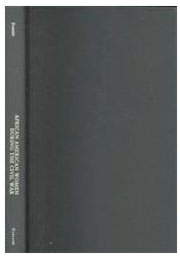 |
Forbes, Ella. African American Women During the Civil War. New York and London: Routledge, 1998. Black women have been rendered invisible in traditional Civil War history and marginalized in African American chronicles. African American Women During the Civil War addresses this lack by reclaiming and resurrecting the role of African American females, individually and collectively, during the Civil War. It brings their contributions, in the words of a Civil War participant, Susie King Taylor, “in history before the people.” This study uses an abundance of primary sources to restore African American female participants in the Civil War to history by documenting their presence, contributions, and experience. Free and enslaved African American women took part in this process in a variety of ways. These women were spies, soldiers, scouts, nurses, cooks, seamstresses, laundresses, recruiters, relief workers, organizers, teachers, activists, and survivors. They carried the honor of the race on their shoulders, insisting on their right to be treated as “ladies” and knowing that their conduct was a direct reflection on the African American community as a whole.
|
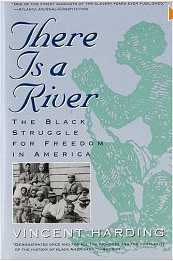 |
Harding, Vincent. There Is a River: The Black Struggle for Freedom in America. New York, NY: Vintage Books, 1981.
|
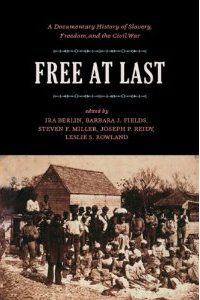 |
Berlin, Ira, and Barbara J. Fields, et. al., eds. Free at Last: A Documentary History of Slavery, Freedom, and the Civil War. Online location: http://www.history.umd.edu/Freedmen/falpg.htm.
|
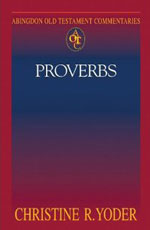 |
Yoder, Christine R. Proverbs. Abington Old Testament Commentaries. Nashville, TN: Abingdon Press, 2009. |
XII. Notes for Selected Songs
A. Hymn(s)
We’ve Come This Far by Faith. By Albert Goodson
Location:
African American Heritage Hymnal. Chicago, IL: GIA Publications, 2001. #412
Lift Every Voice and Sing. By James Weldon Johnson. Tune by J. Rosamond Johnson
Location:
African American Heritage Hymnal. #540
Boyer, Horace Clarence. Lift Every Voice and Sing II: An African American Hymnal. New York, NY: Church Pub., 1993. #1
Cleveland, J. Jefferson, and Verolga Nix. Songs of Zion. Nashville, TN: Abingdon, 1981. #32
B. Well-Known Song(s)
I’m Free. By Milton Brunson
Location:
Greatest Hits. Vol. 1. New York, NY: Word/Epic, 1996.
We Made It. By Hezekiah Walker
Location:
Family Affair 2: Live at Radio City Music Hall. New York, NY: Verity, 2002.
Woke Up This Mornin’ (with My Mind Stayed on Freedom). Traditional
Location:
African American Heritage Hymnal. #566
C. Spiritual(s)
Oh, Freedom.
Location:
African American Heritage Hymnal. #545
Walk Together Children.
Location:
African American Heritage Hymnal. #541
Glory, Glory, Hallelujah. Spiritual. Tune, (GLORY).
Location:
African American Heritage Hymnal. #500
Lead Me, Guide Me: The African American Catholic Hymnal. Chicago, IL: GIA Publications, 1987. #290
The New National Baptist Hymnal 21st Century Edition. Nashville, TN: Triad Publications, 2001. #31
Evangelical Lutheran Church in America, and Lutheran Church—Missouri Synod. This Far by Faith: An African American Resource for Worship. Minneapolis, MN: Augsburg Fortress, 1999. #148
We’ve Come a Long Way, Lord. Traditional
Location:
Lead Me, Guide Me: The African American Catholic Hymnal. #294
D. Modern Song(s) (Written between 2000–2010)
For Every Mountain. By Kurt Carr
Location:
Very Best of Praise and Worship. New York, NY: Verity, 2006.
We Have Overcome. By Israel Houghton
Location:
Israel and New Breed. Live: A Deeper Level. New York, NY: Integrity Music, 2007.
Can’t Give up Now. By Mary Mary
Location:
Thankful. New York, NY: Columbia/C2 Records, 2000.
Online location: www.ntimemusic.com
Lyrics: http://www.azlyrics.com/lyrics/marymary/cantgiveupnow.html accessed 13 January 2011
|